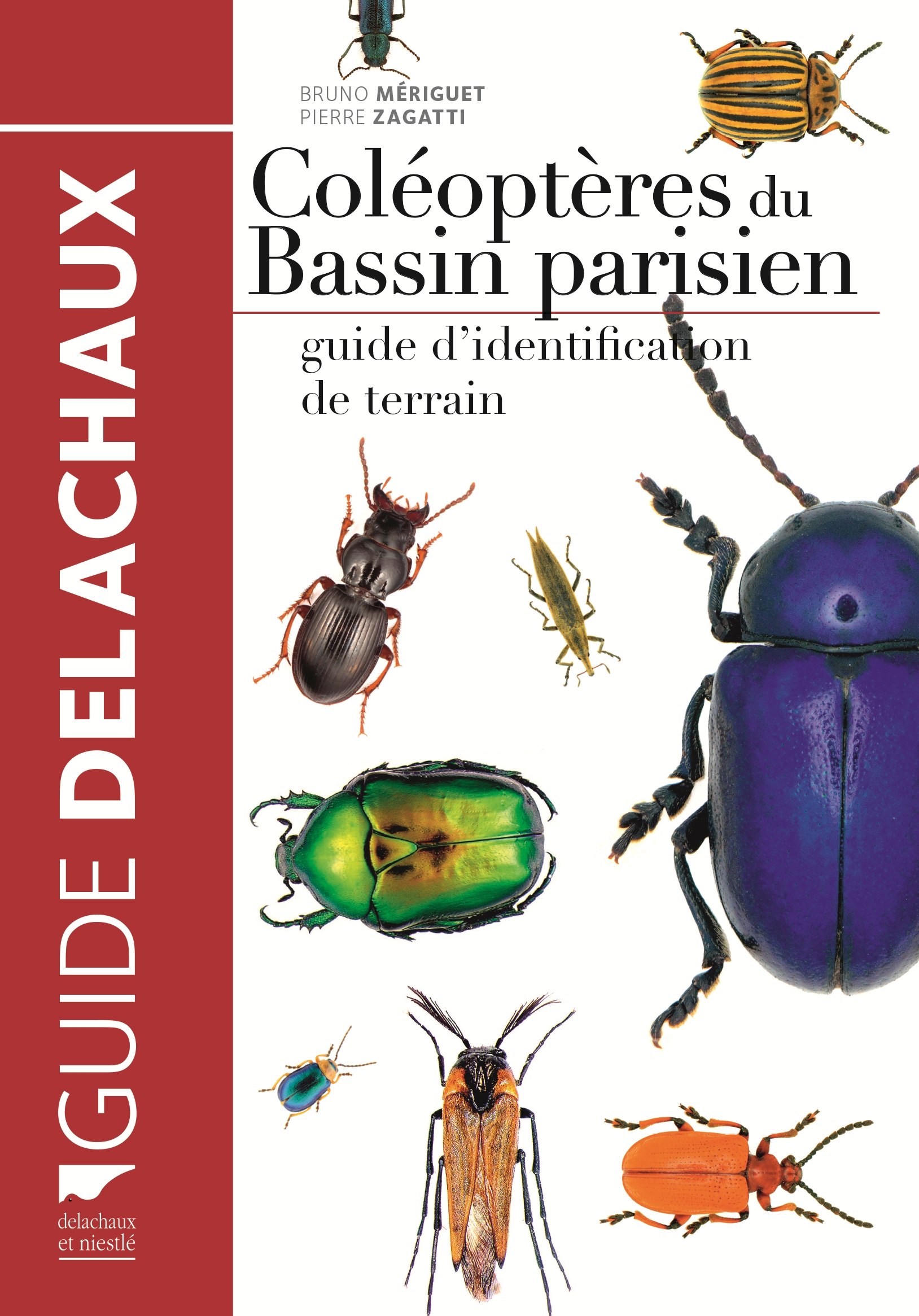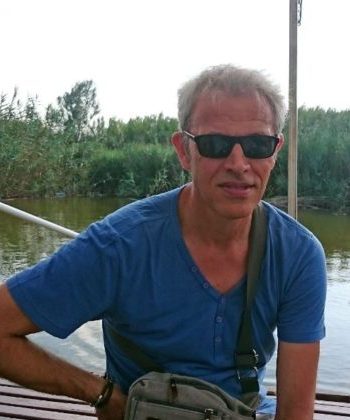Carabes, ketoines, scarabs, capricorns, chrysomèles… : a guide to discover half a thousand Parisian Basin coleos
Ayant présenté il y a peu le traité que Patrice BOUCHARD et une équipe de spécialistes ont dédié aux coéoptères du monde, adapté et traduit en France par Delachaux, nous demeurons dans ce groupe d’insectes avec un livre, publié par le même éditeur, dont le propos intéressera probablement plus directement, sur le terrain, l’entomologiste ou le simple naturaliste…
caption id=”attachment_3257″ align=”alignleft” width=”230″] Paris Basin Beetles (Source : Delachaux & Niestlé – 2016)[/caption]
Paris Basin Beetles (Source : Delachaux & Niestlé – 2016)[/caption]
In fact, the guide Paris Basin Coleoptera designed by Bruno MERIGUET and Pierre ZAGATTI is above all practical : allowing to be initiated with rigour to the observation and the identification of the beetles of the Paris Basin, a region whose entomological interest does not break down, in spite of the aggressions of pollution and the constant degradation of many natural environments, it can only encourage to remain attentive to this modest but fascinating fauna – with which we cohabit on a daily basis -.
Almost half a thousand species (about 10% of those known in the region) are presented with their name (scientific and popular), the family to which they belong, the essential criteria of their diagnosis, elements about their living environment and, above all, a photographic portrait of great fidelity (which owes much to the technique of focus stacking, which will be the subject of a future article in this blog). It will therefore be easy to determine these species (which are hardly ambiguous), but the authors recall that their guide knows its limits: it does not claim to be exhaustive and it does not make it possible to determine (as would dichotomous keys, lire this article) the species not represented – it can however often allow them to be approached at the generic level -. One particular and very innovative point deserves attention: the inclusion of QRcodes referring, for each beetle monograph, to the national inventory of natural heritage (INPN).
caption id=”attachment_3264″ align=”alignright” width=”330″] Example of species presentation : family, diagnosis, ecology, photo in focus stacking and QRcodes (Source : B. Meriguet and P. Zagatti, Delachaux & Niestlé – 2016)[/caption]
Example of species presentation : family, diagnosis, ecology, photo in focus stacking and QRcodes (Source : B. Meriguet and P. Zagatti, Delachaux & Niestlé – 2016)[/caption]
This manual is an introduction to coleopterology and will naturally invite the reader to approach the diversity of the beetles of the Paris Basin and encourage him to deepen his knowledge of the fauna of this vast region. He will also be able to arouse, indirectly, his interest for beetles in other parts of France, through works cited in bibliography and more precise (but more austere!) identification keys or through contacts he will make with peers who are also passionate, through entomology associations that regularly organize meetings and outings.
MERIGUET B., ZAGATTI P. (2016)
Coleopters of the Paris Basin : field identification guide
Delachaux and Niestlé, 288 pages
Interview of the author
Entomologist working at the Office pour les Insectes et leur Environnement (OPIE) for more than 15 years, Bruno MERIGUET is a recognised specialist in French beet beetles and has carried out numerous surveys and inventories in Île-de-France. Author, with Pierre ZAGATTI (research director at INRA and founding member of OPIE) of the guide presented here, he kindly accepted to answer the questions of”Passion-Entomology”.
-
How did you come up with the idea of publishing a sum on the Paris Basin beetles ?
?

It’s a long story that took a long time to write. In the early 2000s, during naturalist outings in the Fontainebleau region, naturalist Christophe PARISOT asked me to design a document that would identify common beetles. I didn’t have enough knowledge then and I didn’t know how to go about succeeding in this alchemy of simplicity and rigour. For the record, the number of beetle species known historically in Île-de-France is around 5500: this is half of France’s fauna !
So the idea is a bit forgotten. On several occasions, Pierre ZAGATTI and I have written fact sheets, checklists and tools for our personal use or for a small group. These documents already relied heavily on Pierre’s photographs, but they remained confidential and rarely fully satisfactory.
In 2011, at OPIE where I work, we launched a national survey on Lucane kite (Lucanus cervus). It was based on a card allowing to differentiate it from the Petite-biche (Dorcus parallelipipedus), a species with which there is often confusion.
Things finally accelerated in June 2014. The butterfly guide by Tristan LAFRANCHIS (1), then just published, was based on plates on which identification criteria were pointed using arrows. Christophe indirectly revived me on the idea of a similar guide, all the more so as I had then all the tools to make this synthesis: the photos of Pierre ZAGATTI, essential, an approach which consisted in reducing the list to the only identifiable species on the ground and an identification method based on the validation of a series of unique characters for each species…
-
How did you proceed to carry out this particularly important work and compile obviously numerous data ?
It only remained to constitute this list, to establish and check the criteria and to make the photographs of the species which were not yet carried out.
The knowledge acquired during fifteen years of entomology, and in particular the study of beetles in Île-de-France, provided the core of the first list which included 250 species.
By exchanging with more experienced colleagues on certain groups – I am thinking in particular of staphylins, chrysomela, hydrocanthares and weevils -, we have completed this list. We checked and amended it again, by crossing it with the various regional catalogues (catalogues of the Acorep∗, catalogue of the beetles of the Fontainebleau forest, online database Cettia). This is how we arrived at almost 500 species.
caption id=”attachment_3327″ align=”alignleft” width=”319″] Bruno MERIGUET during an inventory (Source : © Photo by Monique BERGER)[/caption]
Bruno MERIGUET during an inventory (Source : © Photo by Monique BERGER)[/caption]
We also eliminated a few that we knew we could distinguish perfectly under a binocular magnifying glass, but which seemed too complex to identify in the field – especially those measuring less than 4 millimeters -.
We are immersed in faunas and catalogues to check the relevance of diagnostic criteria and collect information on sizes, distributions and biology traits. It was important to favour a simple approach in terms of identification and totally rigorous, so that the observations made by readers could be integrated into naturalistic observatories.
Finally, the final list included 468 species and 486 plates because we chose to treat, in certain cases, male and female separately and very variable species on two, even three plates.
In parallel, I created a first model whose functionality I was able to test by experimenting it with some naturalists between May and September 2015.
-
Were there previous works on this specific field ?
We are asked at the time of this synthesis about the target audience and the relevance of the tool.
In our mind, it is above all a field guide for naturalists, used to identifying birds, plants or fungi, and who sometimes (even often) encounter beetles. With a little hindsight, it can also be an excellent introduction to the diversity of beetles, a means of making this order accessible to curious people, as we did in their time the ornithological guide by Roger T. PERTERSON or the entomological guide by Arne WENDLER and Johann-Hendrick NÜSS on the Odonates (2).
This work tends to fill the important gap that exists between the general guides (to quote only one, the excellent work of the English naturalist Michael CHINERY”Insects from France and Western Europe” (3)) and specialized works on a given family (Carabidae, Elateridae, etc.), numerous but rather inaccessible without the support of an experienced entomologist. Only the”Atlas des coléoptères de France, Belgium, Suisse
” by Luc AUBER, now out of print, and, more precisely, the various volumes of”Planting Coleopters of Europe, volume 1, tome 2, tome 3” or”European Copters
” de Gaëtan de CHATELET (4) occupy this intermediate position without however having taken the decision to limit themselves to directly identifiable species on the ground.
-
What characterizes most the fauna of the Parisian Basin beetles ?
It is essentially a plain fauna and has very little endemism. The Atlantic, Mediterranean and mountain influences are felt and contribute to its relative diversification. The large forest massifs also bring their lots of remarkable species – I am thinking in particular of Fontainebleau -. However, we have found that it is often the lack of observers that gives the impression of rarity: this guide will, we hope, contribute to improving knowledge on the distribution of certain species.
The fauna of the Paris Basin is in a way “the background of fauna” of France. We have not dealt with coastal, mountain or Mediterranean species. We also stopped at the Loire because this wild river presents an original fauna and rather different from that of the Île-de-France.
-
Do you think that your work can contribute to raising public and political awareness of the necessary protection of beetles, whose essential participation in ecosystems ?
is known
This guide is primarily intended for naturalists, as they are the ones who can provide knowledge on the presence and distribution of species and thus ensure better consideration of biodiversity in local policies. Similarly, local naturalists will then be able to share their knowledge with both the general public and elected officials, so that ecosystems can be taken into account.
In addition, this guide invites naturalists, after a period of familiarization with the book, to get into the habit of recording their observations and to transmit them to naturalist observatories so that they feed the reflections when a question relating to biodiversity conservation emerges locally.
caption id=”attachment_3325″ align=”alignleft” width=”260″] Species presentation example : family, diagnosis, ecology, photo in focus stacking and QRcodes (Source : B. Meriguet and P. Zagatti, Delachaux & Niestlé – 2016)[/caption]
Species presentation example : family, diagnosis, ecology, photo in focus stacking and QRcodes (Source : B. Meriguet and P. Zagatti, Delachaux & Niestlé – 2016)[/caption]

-
Would you have one or two amazing anecdotes about your encounters with Parisian Basin coleos ?
The fauna of a region, always dynamic, evolves over time. It is therefore thanks to many observers that our work has been improved, partly during the creation of the species list. Having consulted the naturalist database Cettia (used by Seine-et-Marne Environnement and Natureparif), we had the pleasure to discover validated observations of species that were not considered as present in Île-de-France. So, thanks to Julien BOTINELLI, we added Lopheros rubens, a rather rare forest Lycidae beetle, and, thanks to Axel DEHALLEUX, we included an easily identifiable ladybird Ceratomegilla undecimnotata.
An arachnologist, Claire JACQUET, also submitted us photos or specimens of species observed within the scope of the book’s validity, allowing us to complete the family of carabics with a species inferred to wetlands, Chlaenius olivieri, present in the Seine valley upstream from Montreau, as well as with a strange small chrysomela with a very large head : Cheilotoma musciformis.
These examples illustrate the improvement of knowledge that is possible with the multiplication of observers, especially if they have adapted tools.
Book references :
- Lafranchis T. (2014) – Papillons de France : guide de détermination des papillons diurnes – Editions Diathéo, 351 pages
- Published and distributed by the French Society of Odonatology (1997)
- Chinery M. (revised and completed edition : 2012) – Insects of France and Western Europe – Flammarion, 320 pages
- Published and distributed by NAP : https://www.napeditions.com/fr/
In the same section, you can find the interviews of
- David GIRON (entomologist-researcher CNRS – IRBI-Université de Tours)
- Henri-Pierre ABERLENC (entomologist – CIRAD)
- Nicolas MOULIN (independent entomologist)
- Patrice BOUCHARD (entomologist researcher – University of Ottawa)
- Marius BREDON (entomologist – graduate of the Master 2 of Tours)
- Adrian Hoskins (Internationally renowned Entomologist – Rhopaloceran Butterfly Specialist)
- Pierre-Olivier Maquart (Entomologist specializing in African Cerambycidae and Amblypyges – Doctoral student at the University of Sterling)
- Yves Carton (Director of Research emeritus at CNRS – Author of”History of entomology – Relations between French and American biologists – 1830-1940
“)
- Gérard Duvallet (Professor emeritus at the Université Paul-Valéry Montpellier 3, researcher at the Centre d’Ecologie Fonctionnelle et Evolutive (CEFE)
- Pierre Kerner (Lecturer in Evolutionary Development Genetics at the University of Paris Diderot)




